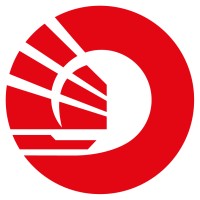
VakıfBank
1954 yılında, vakıf kaynaklarını ekonomik kalkınmanın gereksinimleri doğrultusunda en iyi biçimde değerlendirmek amacıyla kurulan VakıfBank, o günden bu yana çağdaş bankacılık yöntemleri ve uygulamalarıyla Türkiye’nin tasarruf düzeyinin gelişim sürecine katkıda bulunmaktadır. VakıfBank; bölgesinin en iyi, en çok tercih edilen ve değer yaratan bankası olma vizyonu doğrultusunda, vakıf kültüründen aldığı güçle, kendisine emanet edilen varlık ve değerleri etkin ve verimli yöneterek müşteriler, çalışanlar, hissedarlar ve topluma kattığı değerleri sürekli artırma misyonuyla hareket etmektedir. Kurumsal, ticari ve küçük işletme bankacılığının yanı sıra bireysel ve özel bankacılık alanlarında da çağdaş bankacılık ürün ve hizmetleri sunan VakıfBank, özellikle bir alanda değil, tüm finansal alanlarda uzmanlaşmış, Türkiye’nin önde gelen bankalarından biridir. Temel bankacılık ürün ve hizmetlerine ek olarak yatırım bankacılığı ve sermaye piyasası faaliyetlerinde de bulunan VakıfBank, iç ve dış ticaretin finansmanında öncü bir rol üstlenmektedir. Ayrıca, finansal iştirakleri aracılığıyla sigortacılıktan finansal kiralama ve factoring hizmetlerine kadar geniş bir yelpazede yer alan finansal ürünleri çağın gerektirdiği yüksek teknolojilerle müşterilerine sunmaktadır. VakıfBank’ın ABD New York, Kuzey Irak Erbil, Katar Doha şubelerinin yanı sıra Bahreyn’de kıyı bankacılığı şubesi bulunmaktadır. Ayrıca, Avusturya’da VakıfBank International AG (Viyana Şubesi ve Almanya’da Köln Şubesi), KKTC’de Tasfiye Halinde World Vakıf UBB. Ltd. ve Kıbrıs Vakıflar Bank. Ltd. olmak üzere yurt dışında üç bankada da iştiraki bulunmaktadır. VakıfBank’ın diğer iştirakleri arasında; Vakıf Faktoring A.Ş., Vakıf Finansal Kiralama A.Ş., Vakıf Gayrimenkul Yatırım Ortaklığı A.Ş., Vakıf Menkul Kıymet Yat. Ort. A.Ş., Vakıf Yatırım Menkul Değerler A.Ş. Vakıf Pazarlama San. ve Ticaret A.Ş., Taksim Otelcilik A.Ş., Vakıf Enerji ve Madencilik A.Ş., Vakıf Gayrimenkul Değerleme A.Ş. bulunmaktadır.






